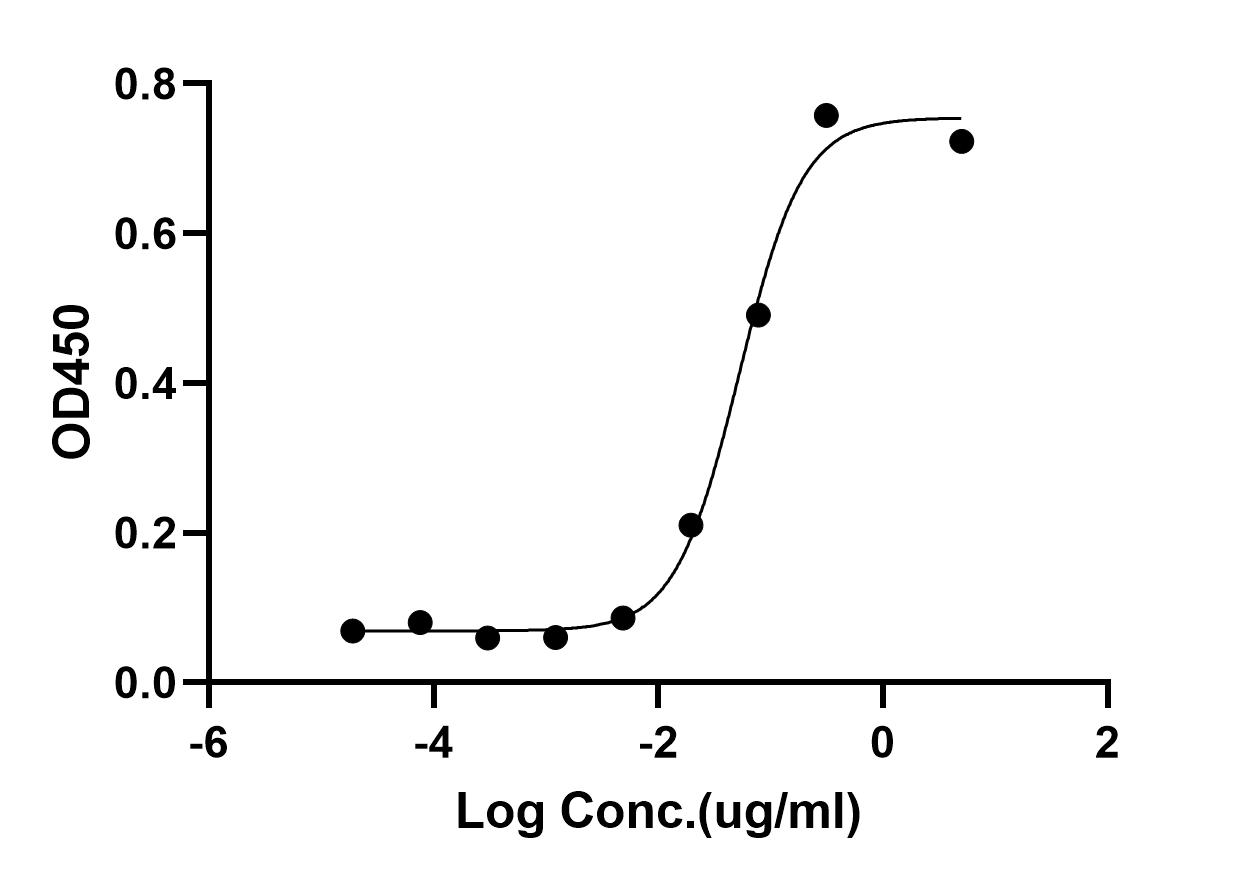CD99 (PN0188) Nb-FC recombinant antibody
- Catalog No.:YA0578
- Applications:ELISA;FCM
- Reactivity:Human
- Target:
- CD99
- Gene Name:
- CD99 MIC2 MIC2X MIC2Y
- Protein Name:
- CD99 antigen (12E7) (E2 antigen) (Protein MIC2) (T-cell surface glycoprotein E2) (CD antigen CD99)
- Human Gene Id:
- 4267
- Human Swiss Prot No:
- P14209
- Immunogen:
- Purified recombinant Human CD99
- Specificity:
- This recombinant monoclonal antibody can detects endogenous levels of CD99 protein.
- Formulation:
- Phosphate-buffered solution
- Source:
- Camel, chimeric fusion of Nanobody (VHH) and mouse IgG1 Fc domain , recombinantly produced from 293F cell
- Dilution:
- ELISA 1:5000-100000;FCM 1-2μg/Test
- Purification:
- Recombinant Expression and Affinity purified
- Concentration:
- Please check the information on the tube
- Storage Stability:
- -15°C to -25°C/1 year(Avoid freeze / thaw cycles)
- Other Name:
- CD99 antigen (12E7;E2 antigen;Protein MIC2;T-cell surface glycoprotein E2;CD antigen CD99;CD99 nanobody;
- Background:
- The protein encoded byThis gene is a cell surface glycoprotein involved in leukocyte migration, T-cell adhesion, ganglioside GM1 and transmembrane protein transport, and T-cell death by a caspase-independent pathway. In addition, the encoded protein may have the ability to rearrange the actin cytoskeleton and may also act as an oncosuppressor in osteosarcoma.This gene is found in the pseudoautosomal region of chromosomes X and Y and escapes X-chromosome inactivation. There is a related pseudogene located immediately adjacent toThis locus. [provided by RefSeq, Mar 2016]
- Function:
- Involved in T-cell adhesion processes. It is involved in spontaneous rosette formation with erythrocytes.,miscellaneous:The gene encoding for this protein is located in the pseudoautosomal region 1 (PAR1) of X and Y chromosomes.,PTM:Extensively O-glycosylated.,similarity:Belongs to the CD99 family.,
- Subcellular Location:
- Membrane ; Single-pass type I membrane protein .
- Expression:
- Membranous
- June 19-2018
- WESTERN IMMUNOBLOTTING PROTOCOL
- June 19-2018
- IMMUNOHISTOCHEMISTRY-PARAFFIN PROTOCOL
- June 19-2018
- IMMUNOFLUORESCENCE PROTOCOL
- September 08-2020
- FLOW-CYTOMEYRT-PROTOCOL
- May 20-2022
- Cell-Based ELISA│解您多样本WB检测之困扰
- July 13-2018
- CELL-BASED-ELISA-PROTOCOL-FOR-ACETYL-PROTEIN
- July 13-2018
- CELL-BASED-ELISA-PROTOCOL-FOR-PHOSPHO-PROTEIN
- July 13-2018
- Antibody-FAQs
- Products Images

